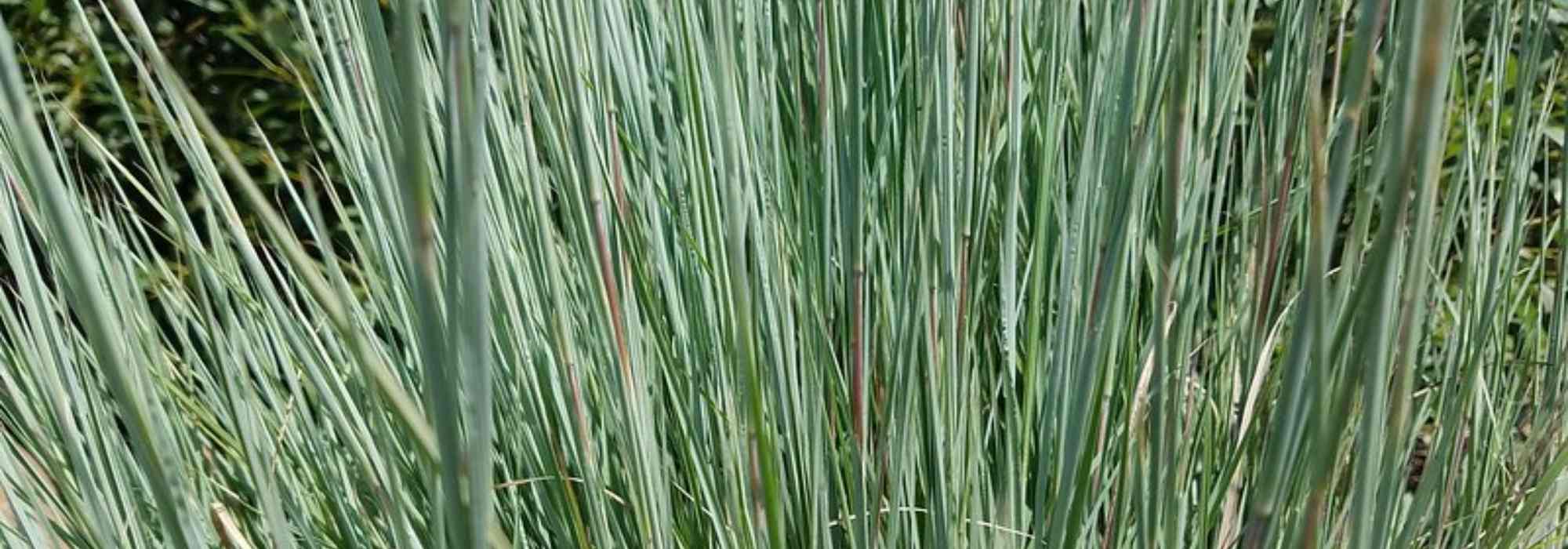
Schizachyrium scoparium: planting, growing
Contents
Schizachyrium in a nutshell
- Schizachyrium is undoubtedly one of the most beautiful grasses, due to its foliage that changes colour with the seasons
- Sun-loving, it forms graceful, upright and very colourful clumps
- Vigorous and fully hardy, it fears neither cold nor heat and thrives in dry or well-drained soil
- It maintains a lovely appearance even in the heart of winter
- It is very useful in the ornamentation of dry gardens, or in poor soils, and can even be grown in pots
A word from our expert
Schizachyrium scoparium, also known as blue stem or formerly Andropogon, is a hardy perennial grass that is still underutilised in our gardens. Yet, it is one of the most beautiful! It is appreciated for its decorative foliage that changes colour throughout the seasons. Blue-green in summer, it dons vibrant hues of orange, rust, red, bronze, and even purple when autumn arrives. This grass, with its colourful and airy tufts that sway at the slightest breeze, deserves a place in our gardens.
From the variety ‘Blue Heaven‘ to ‘Prairie Blues’ and ‘Standing Ovation’, all are stunning from summer to autumn and even in the heart of winter, as unlike other grasses, the tufts of Schizachyrium remain proudly upright, without flopping, showcasing warm tones during a time that is often less bright.
Perfectly hardy and accustomed to difficult conditions, neither too tall nor too short, this grass from North American prairies is at home in all gardens, from the most natural to the most contemporary.
It fears neither wind nor drought and adapts perfectly to dry and/or poor soils, only dreading overly rich and wet soils. And for maintenance, nothing could be easier; simply cut the tuft back to the ground at the end of winter.
Add a touch of lightness and brilliance to your shrub and perennial beds with this exceptionally ornamental grass!

Schizachyrium scoparium: autumn foliage, centre in summer, to the right the cultivar ‘Standing Ovation’ (Photo: The Plantography Project)
Description and botany
Botanical data
- Latin name Schizachyrium scoparium
- Family Poaceae
- Common name Blue stem
- Flowering August to December
- Height 0.45 to 1.20 m
- Exposure Sun
- Soil type well-drained, light
- Hardiness -20°C
Schizachyrium, commonly known as blue stem, formerly Andropogon, is a perennial grass belonging to the Poaceae family, like many grasses. It grows spontaneously in meadows worldwide, particularly in North America. The genus Schizachyrium comprises about 100 species, among which Schizachyrium scoparium and its numerous cultivars are the only ones commercially available. Each cultivar differs in size, shape, and leaf colour, offering subtle variations.
The plant forms an upright clump that spreads quite slowly, reaching heights of 40 cm to 1.20 m when in flower, with a width of about 50 cm, depending on the varieties.
From a basal rosette, Schizachyrium forms a dense bush with upright stems. The leaves are soft, linear, deciduous, and measure 20 to 50 cm in length. The variety ‘Ha Ha Tonka’ is distinguished by its leaves adorned with stiff, silky hairs along the stems.
Schizachyrium is remarkable for its foliage that changes colour throughout the seasons, literally igniting in autumn. It is blue-green in spring, gradually turning orange or yellow as temperatures begin to drop, eventually shifting at the end of the season to orange-bronze, rust, with different shades depending on the cultivars, even reaching violet-red in the case of the variety ‘Blue Heaven‘ or bright red in ‘Standing Ovation’.
From this flamboyant foliage emerge, in late summer or autumn, discreet inflorescences in the form of feathery or silky spikelets measuring 3 to 15 cm long, white turning ash-grey at maturity, purple or beige, shifting to brown-violet.
In late autumn, the leaves and spikelets dry and persist for a good part of winter, providing a spectacle when frost envelops them. Neither truly evergreen nor truly deciduous, this is what is known as marcescent foliage. Thus, this grass remains decorative for a good part of the winter season, and it has the significant advantage of standing upright without flopping over until the heart of winter.
 Schizachyrium scoparium displays stunning colours in autumn. To the right, the aerial flowering occurs from September.
Schizachyrium scoparium displays stunning colours in autumn. To the right, the aerial flowering occurs from September.
“`
Read also
Grasses: which variety to choose?Main varieties
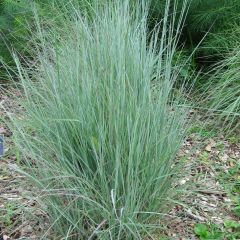
Schizachyrium scoparium
- Flowering time October to December
- Height at maturity 80 cm
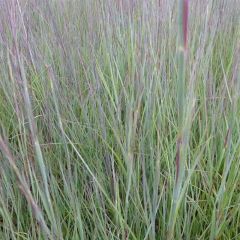
Schizachyrium scoparium Prairie Blues
- Flowering time October to December
- Height at maturity 80 cm
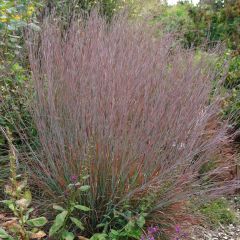
Schizachyrium scoparium Standing Ovation
- Flowering time October to December
- Height at maturity 1,20 m
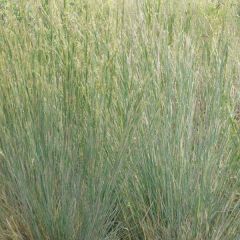
Schizachyrium scoparium Blue Heaven
- Flowering time September, October
- Height at maturity 80 cm
Discover other Schizachyrium
View all →Available in 2 sizes
Available in 2 sizes
Available in 2 sizes
Available in 2 sizes
Available in 1 sizes
Available in 1 sizes
Available in 1 sizes
Available in 1 sizes
Available in 2 sizes
Available in 3 sizes
Planting Schizachyrium
Where to plant Schizachyrium?
Schizachyrium is one of the hardiest grasses. This herb from North American prairies is hardy down to -20°C. Adapted to competition and harsh conditions in its native habitat, it withstands cold, wind, salt spray, air pollution, and summer drought. It only fears overly wet soils in winter, where it will decline. It requires light and thrives in full sun, although it can tolerate light shade. It prefers low-fertility, even poor, dry or sandy soils, which must be very well-drained.
Provide it with a nice, open, sunny location: it will bulk up in a few seasons, forming large, upright, light, and very colourful clumps.
It will find its place in a dry or gravel garden, in the most ungrateful corners, either isolated or in scattered groups to add height, volume, and structure. It can be planted in large beds, in dry rockeries and naturalistic meadows, to border a natural path, or even in a large pot on the terrace.
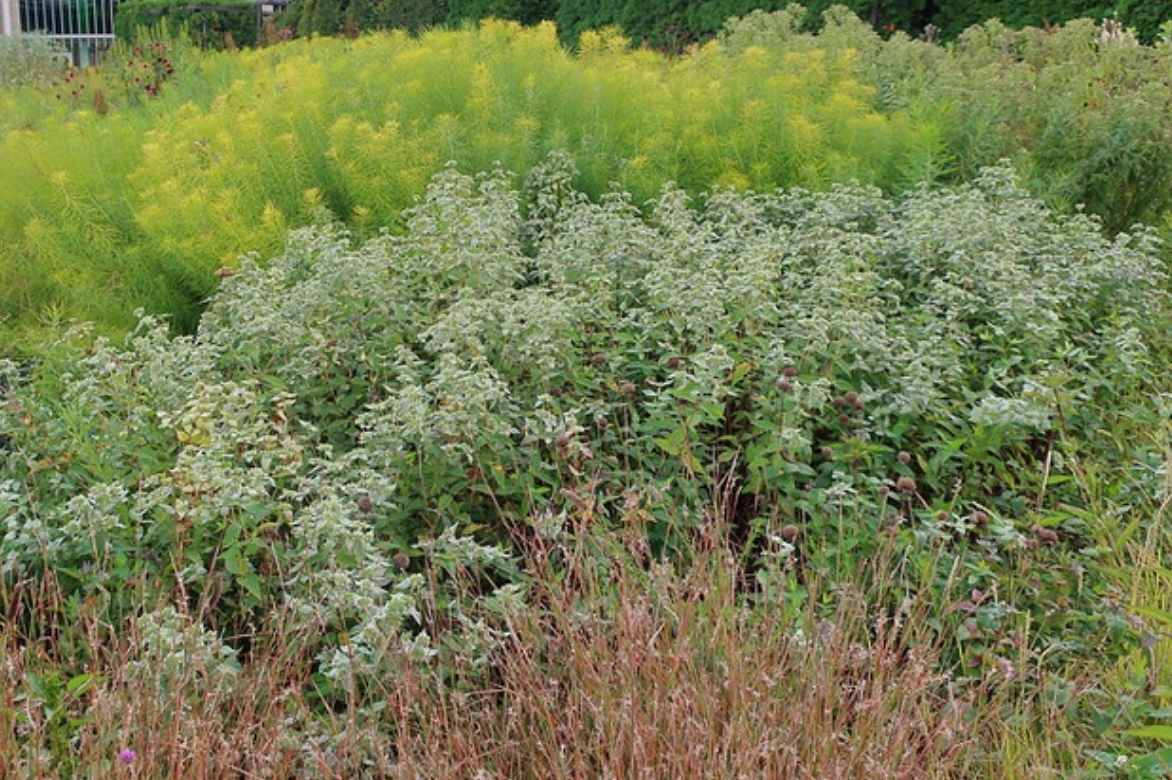
Schizachyrium scoparium in the foreground, associated with Mountain Mint and Amsonias hubrichtii (Photo: KM)
When to Plant Schizachyrium?
Planting Schizachyrium should be done in spring from March onwards to encourage rooting before summer. In warm, dry climates, you can also plant it in autumn. In any case, avoid planting during frosts or extreme heat.
How to plant Schizachyrium scoparium?
In the ground
It can be planted either isolated or in large masses to structure a large bed; count on 4 to 5 plants per m². The soil must be well-draining, not retaining stagnant moisture in winter. Do not add compost or fertiliser at planting. In overly heavy or clayey soil, add a handful of gravel to improve drainage.
- Dig a hole three times the size of the root ball
- Loosen the soil well and add a bit of river sand to lighten it
- Spread a drainage layer at the bottom of the hole
- Place the root ball in the centre of the hole
- Lightly firm the soil
- Water thoroughly at planting
In a pot
Container growing is also suitable, provided you use a sufficiently large pot. A minimum diameter of 20 cm for a plant is a good start. After a year of growth, you will repot it into a larger pot. The substrate should be light. You can plant several cultivars together, provided you adjust the size of the container.
- Spread a drainage layer (gravel, a mix of stones…) at the bottom of the pot
- Plant in a mix of 1/3 garden soil, 1/3 sand, 1/3 gravel
- Water at planting and then regularly
- Place the pot in full sun
Read also
6 grasses for potsMaintenance, pruning and care
Schizachyrium scoparium is a robust grass, ideal for dry, low-water, and low-maintenance gardens. Moreover, it is free from diseases and pests. The addition of fertiliser is also unnecessary. Watering should be very moderate in spring and summer. Once well established, it requires no watering as it withstands drought well. However, remember to water potted specimens, as they will need more water, especially in hot weather. Similarly, they will require repotting once a year or every two years.
The foliage collapses at the end of winter, by cutting back the clump to 20 cm above the soil with pruning shears or shears.
⇒ On the subject, discover Michaël’s tips: Grasses: those that are pruned, those that are coiffed
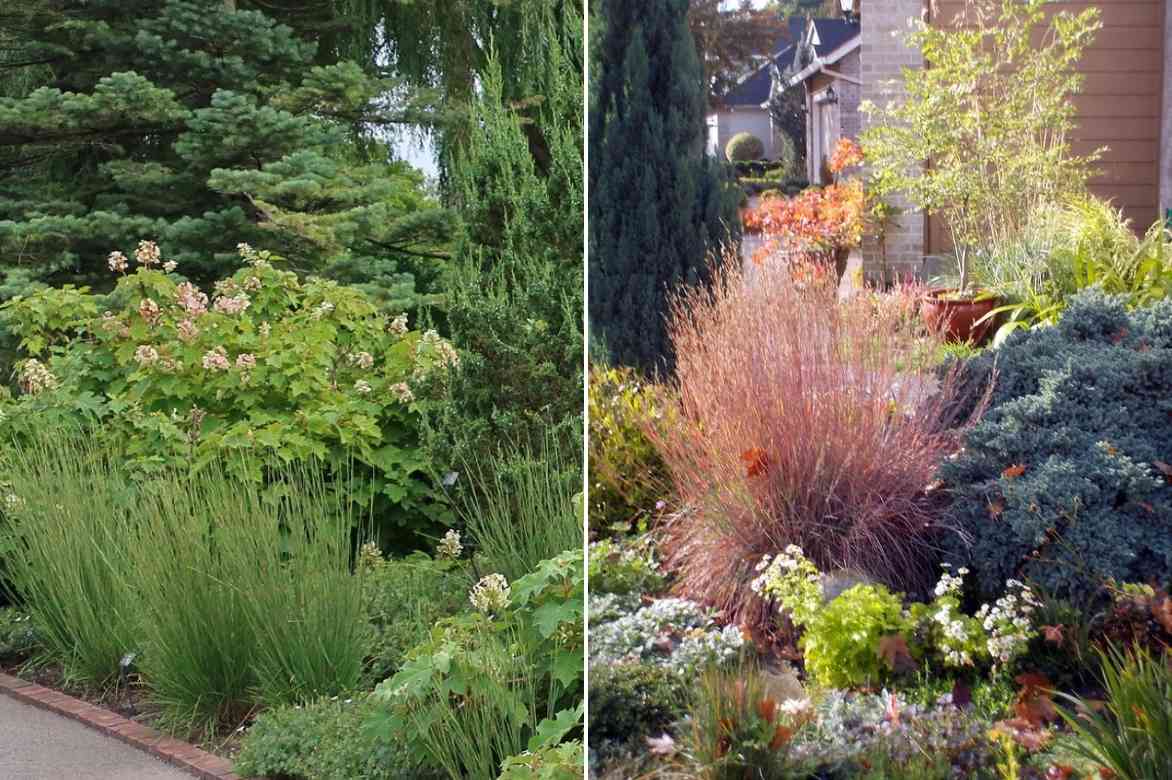
Schizachyrium scoparium in a bed of Hydrangeas quercifolia ‘Alice’ on the left (Photo: KM), and on the right in autumn, dewy and very bright (Photo: Jacki Dee)
Multiplication: division of clumps
Like most grasses, Schizachyrium multiplies easily and preferably by division, although sowing is possible in spring from garden seeds and yields good results after stratification.
Division should be carried out in spring on a well-rooted clump that is at least 4 to 5 years old.
- After lifting the clump with a fork, divide it into several sections using a saw with large teeth or by giving a sharp blow with a spade.
- Replant immediately in a pot or in the garden.
- Water generously to encourage recovery.
Pairing ideas
With its shimmering and upright foliage for a good part of the year, Schizachyrium scoparium brings brightness and structure to the garden. Its light and picturesque clumps stand out in wild settings as well as in more contemporary scenes. In large borders, it easily combines with many summer or autumn flowering perennials.
You can create a grass garden by mixing it with other poaceae such as stipa, fescue, Deschampsia, miscanthus, carex, or Chinese fountain grass. Together, they will provide a backdrop for the colourful summer blooms of echinaceas, verbena Bonariensis, or Kniphofia, adding contrast or recreating harmony between strong hues. To balance a border, you can pair it with more flowing perennials like cosmos, hyssops, nepeta, or shrubby salvias. In natural-style gardens, it will create a contrast of forms alongside hollyhocks.
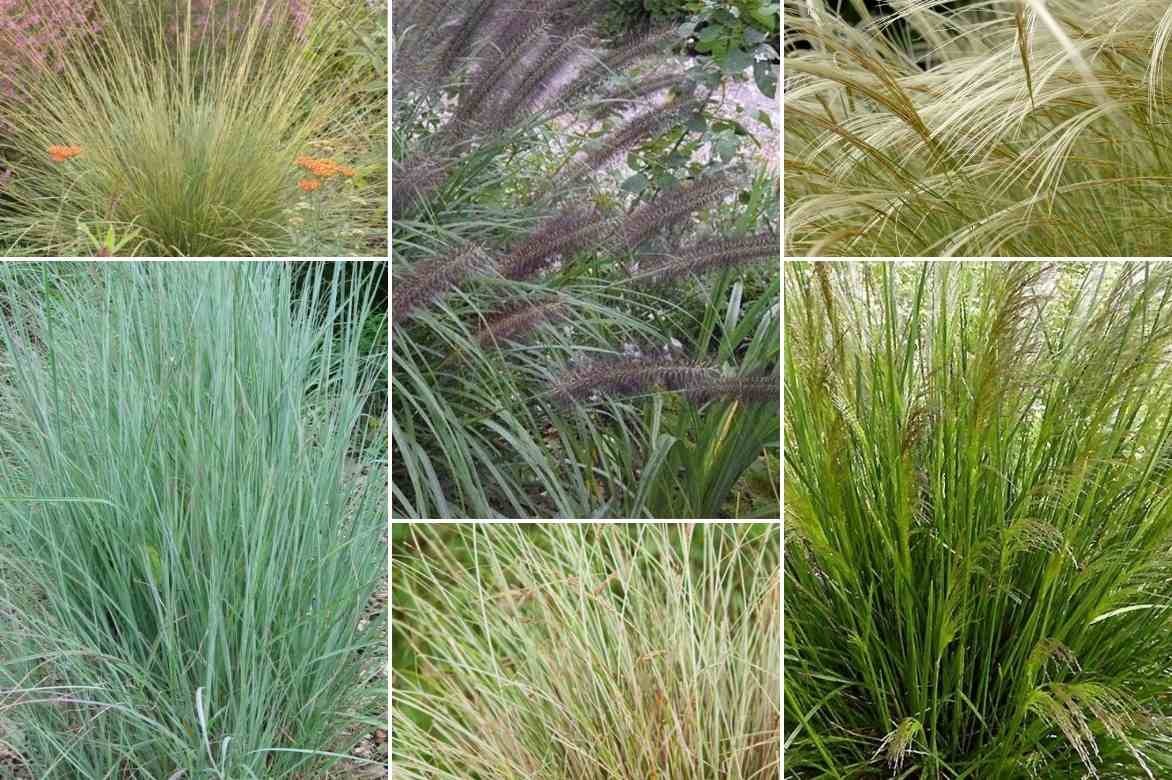 Schizachyrium scoparium (bottom left) in a grass border with: Festuca mairei (top right), Pennisetum alopecuroides ‘Black Beauty’ (top centre), Carex buchananii ‘Viridis’ (bottom centre), Stipa barbata (top right), and Deschampia cespitosa ‘Pixie Fountain’ (bottom right)
Schizachyrium scoparium (bottom left) in a grass border with: Festuca mairei (top right), Pennisetum alopecuroides ‘Black Beauty’ (top centre), Carex buchananii ‘Viridis’ (bottom centre), Stipa barbata (top right), and Deschampia cespitosa ‘Pixie Fountain’ (bottom right)
Its upright silhouette and undemanding nature allow it to associate with plants that, like it, enjoy sun and well-drained soils such as Eryngium and blue-hued wormwoods.
At the edge of a path, pair it with late-flowering perennials like hybrid mulleins, autumn sedums, heleniums, and hardy chrysanthemums.
Highlight its foliage alongside trees and shrubs with autumn colours such as smokebushes.
In a large pot, combine it with sedums; they will form a counterpoint to the verticality of the Schizachyrium.
→ Discover more association ideas with Schizachyrium in our article!
Useful resources
- Discover 7 grasses for a garden exposed to full sun
- Our article: 7 blue grasses
- Subscribe!
- Contents































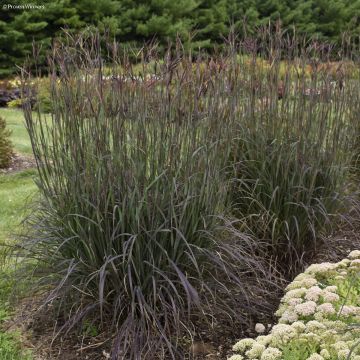



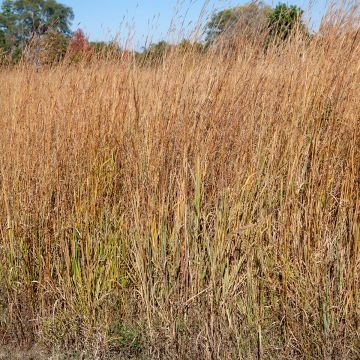
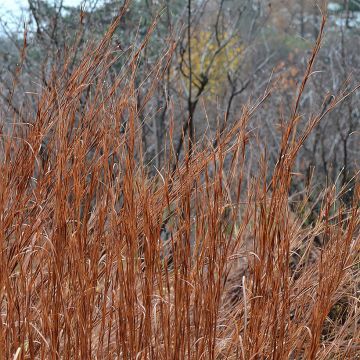
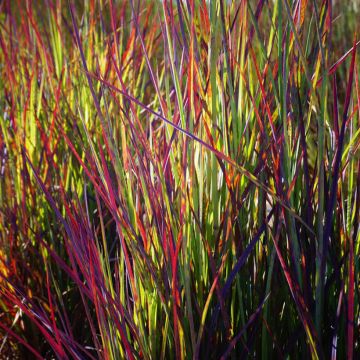
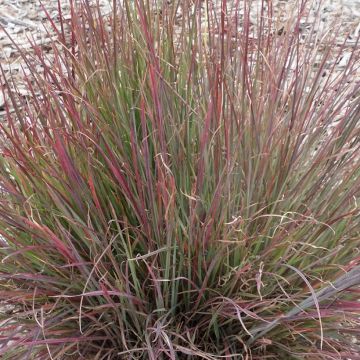
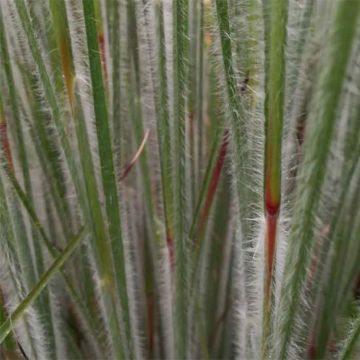
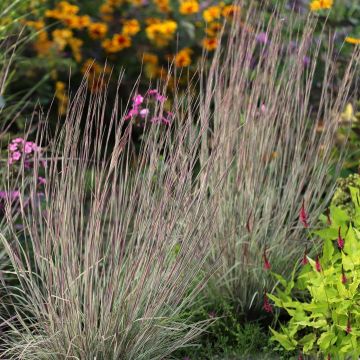
Comments